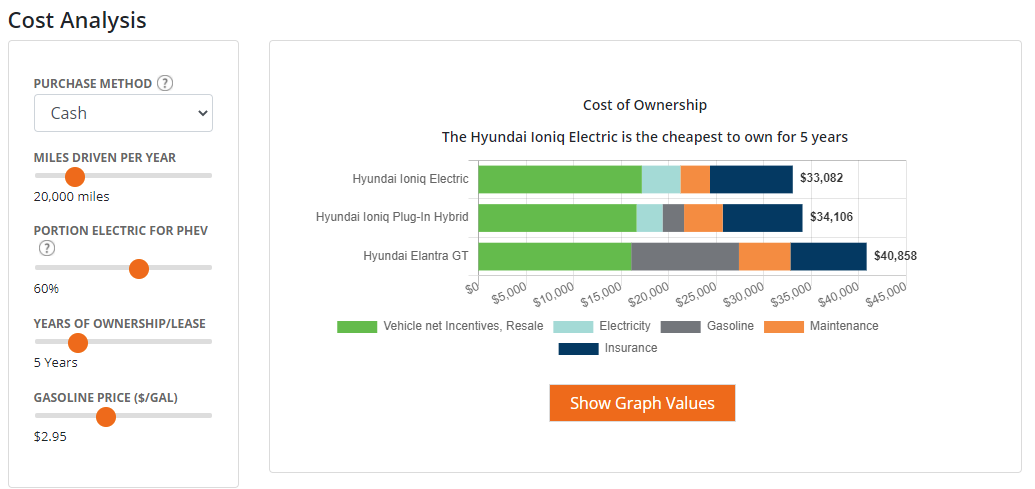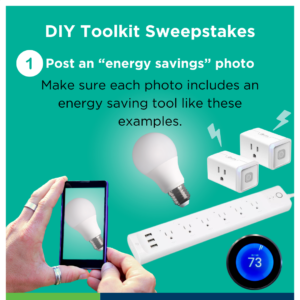
How to consider if an electric vehicle
is right for you
Considering a car purchase often comes with a lot of pressure – this is, after all, a very expensive product that you will be engaging with frequently. You want to get it right. But there are so many questions to consider: New or used? Color? Make and model? What’s in your budget? Which cars look nice? Which ones drive well?
So, it is understandable that many greet an added question to this checklist (gasoline or electric?) with a groan. The good news is that this question has a simple answer: electric vehicles are already the superior choice for many people.
Cost
Cost is, obviously, an important metric. But it’s equally important to make sure you’re looking at the right cost metric. For cars, this term is called Total Cost of Ownership (“TCO”), and it captures the entire cost of owning a car across its lifetime. This includes the depreciation of the car (the difference between what you pay at purchase and what you sell it for down the road), insurance, fueling and maintenance.
All-in-all, the TCO is lowest for all-electric vehicles. The online SVCE EV Assistant tool can help you understand the TCO for comparable vehicles*. A breakdown for Hyundai models is shown below: the EV saves you 17.5% over five years of ownership. This comes from savings on fuel (to match the EV, the ICE vehicle would need gasoline prices to be ~$1 per gallon) and maintenance (EVs have fewer moving parts in the engine and don’t need oil changes!).
Comparison from ev.svcleanenergy.org.
*Note: for used cars, the math should roughly be the same, just with smaller vehicle costs (in green) because used cars have a lower initial cost and less depreciation.
While TCO is lower for EVs, the up-front purchase price is still typically higher for EVs than for comparable gas vehicles and this can be a barrier that prevents those with lower disposable incomes from taking advantage of the better TCO. The state has made additional incentives available to some low-income EV purchasers (learn more in the EV Assistant) to help with adoption, and others may choose to consider affordable lease options.
Environment
In 2019, emissions from ICE passenger cars made up around 32% of energy- and transportation-related greenhouse gas (GHG) emissions in the SVCE service area (per SVCE’s annual GHG emissions inventory). When looking at on-site energy consumption (electricity, natural gas, and transportation fuels), emissions from ICE vehicles make up roughly 60% of the average household’s carbon emissions footprint. All SVCE customers get carbon-free* electricity, so an EV produces no GHG emissions and is an easy way to cut your GHG footprint and join our community in meeting its ambitious carbon reduction goals. The environmental benefit of EVs also hold when looking at “life cycle” emissions (i.e. accounting for GHGs associated with manufacturing and disposal activities).
*Sourced from wind, solar, hydro and other renewable and carbon-free energy sources to meet the total annual demand of SVCE customers.
Driving experience
EVs have several performance benefits compared to ICE vehicles. EVs typically have a lower center of gravity due to the battery pack and also have quicker acceleration because they generate more torque by using the electric motor at the wheel (in fact, a study found vehicle performance drove EV adoption more than environmentalism). The lack of a noisy combustion engine also means that EVs are very quiet.

Growing model catalog
Finally, there’s the look of the car. Everyone has their own idea on what looks good (and opinions vary, whether you’re talking about the Prius or the Cybertruck). Fortunately, there are 60 EVs on the market today (again, see the SVCE EV Assistant) and available models will exceed 100 in a matter of years. On top of that, the number of used EVs on the market will continue to increase as early adopters sell their first EVs or end leases on new vehicles. That said, there are currently more sedan EVs available than other vehicle types (pickups, minivans, SUVs, etc.), so shoppers with a need for a specific type of vehicle may have a limited selection while technologies continue to develop.
With all of that in support of making the transition to electric, there are still some reasons that an EV might not be right for you:
Road trips
Folks who do a lot of long-distance road tripping might lament the lower maximum range on a single “tank” than ICE cars (though the EV ranges have continued to increase), which can require charging pitstops that take longer than just filling up with gasoline. That said, it is important to be realistic about how frequently you actually need (or want) to hit the road for a 10-hour day, as compared with everyday driving patterns – for those who will only do so infrequently, there is an ever-growing network of fast chargers there to provide support to many EVs. Fast chargers can take 30-60 minutes to add hundreds of miles of range to a depleted battery, depending on charger speed and vehicle compatibility, and can easily be found through a variety of apps and websites.
Those with very long-distance commutes or early model EVs with limited range might also run into this issue more frequently – although the more miles you travel, the better the TCO comparison looks for EVs. For drivers who face issues like these, plug-in hybrid electric vehicles (PHEVs) like the Hyundai Ioniq Hybrid included in the TCO chart might be a good compromise.
Charger access
The other key barrier to EV adoption is a lack of charger access. Single-family residents don’t typically face a challenge with easy access: they are able to take advantage of their existing outlets to achieve lower-speed charging, or install a dedicated charger (see the SVCE Appliances Assistant) to achieve medium-speed charging. There are also EV electric rates available through PG&E and SVCE which offer discounted times of day to charge these cars.
But for multi-family property residents, existing access to charging can be hard to come by and challenging to figure out how to install. Many such properties do not have plugs or wiring near parking spaces. And even when they do, there can be challenges with how to track electricity usage of those outlets to the right tenants. As a result, only 9% of local EVs are owned by multi-family tenants even though those tenants make up ~40% of local customers (as outlined in the SVCE EV Infrastructure Plan).
SVCE is actively working to increase charging in the community through CALeVIP ($12 million from SVCE and the state of California will be invested in the coming few years) to increase access and resolve this issue for multi-family tenants. SVCE is further offering the no-cost FutureFit Assist: EV Charging program to help property owners consider how to install chargers and let their tenants achieve this access in an affordable way. SVCE is also working with EVmatch and Ecology Action on pilots through Innovation Onramp to test novel business models for deploying charging at multi-family properties. More on the EV charging challenge for multi-family properties will be explored in an upcoming blog post.
Overall, the answer to whether to go electric for your next car purchase is an easy “yes” for the majority of vehicle owners out there. EVs are an important piece of some ambitious, necessary climate goals for the future of SVCE’s community and in the state of California (you have only to look at Governor Newsom’s recent order that all new cars sold must be electric by 2035 to see the growing urgency). On top of providing carbon-free electricity, SVCE continues to support additional EV charger deployment to help improve access and ensure that everyone can take full advantage of the benefits of EVs.



